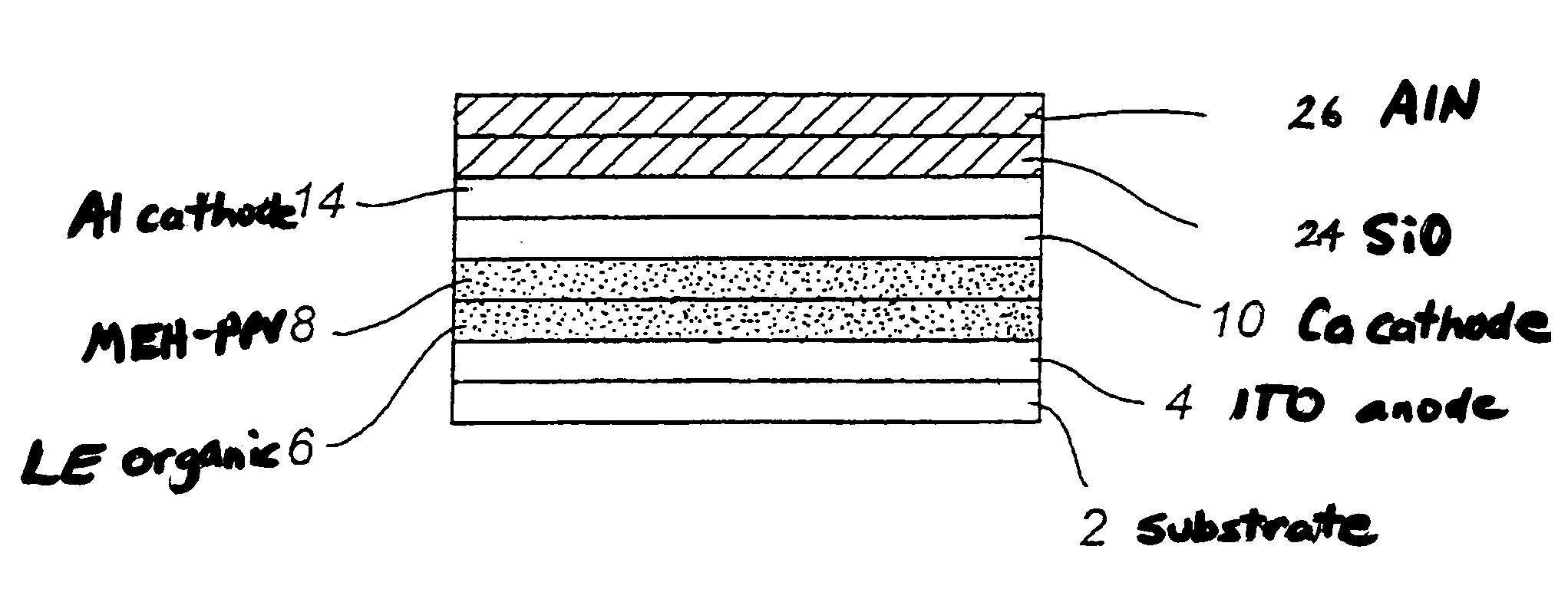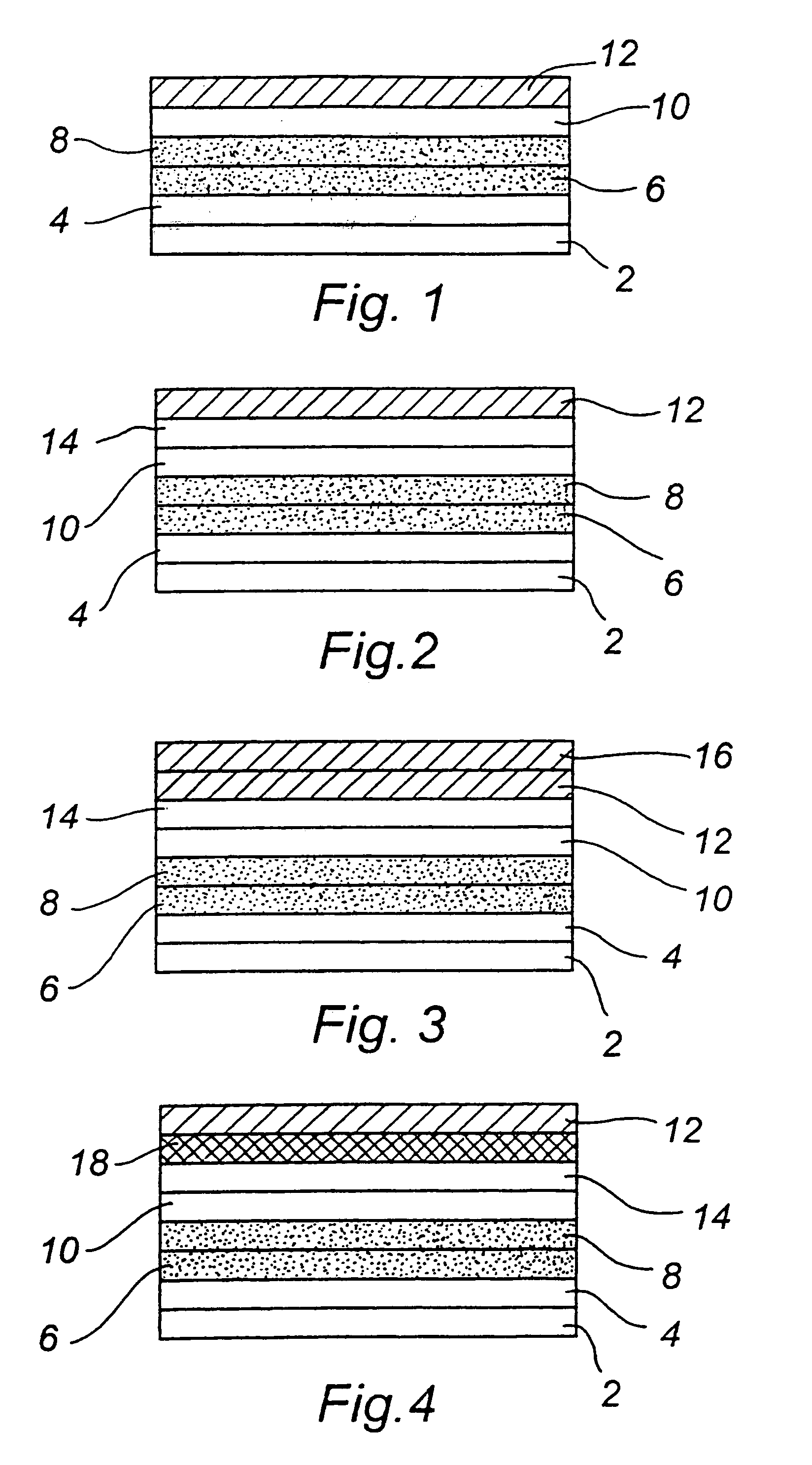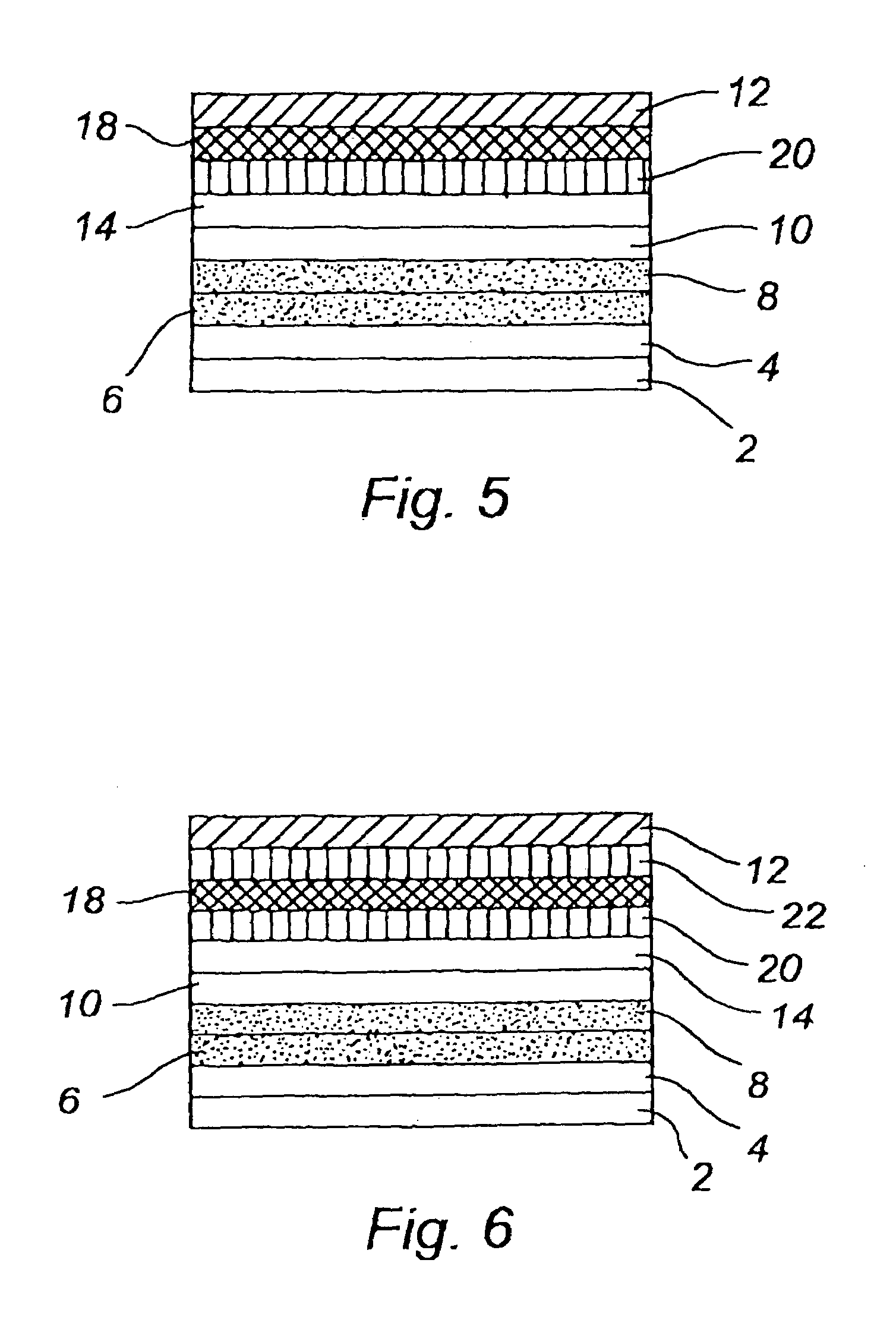Organic light-emitting devices including specific barrier layers
a technology of organic light-emitting devices and specific barrier layers, which is applied in the direction of discharge tube luminescnet screens, discharge tube/lamp details, electric discharge lamps, etc., and can solve the problems of non-emitting black spots, prone to reactive ambient species reaction, and consequent degradation of device performan
- Summary
- Abstract
- Description
- Claims
- Application Information
AI Technical Summary
Benefits of technology
Problems solved by technology
Method used
Image
Examples
first embodiment
[0028]An organic light-emitting device according to the present invention is shown in FIG. 1. The device comprises a first electrode layer 4, in this case an anode layer comprised of indium tin oxide (ITO) formed on a substrate 2. The substrate may, for example, be one made of glass or a flexible plastic substrate or may be a glass-plastic laminate. A first thin film 6 of a light-emissive organic material (in this case, poly(phenylenevinylene) (PPV)) is formed on the ITO layer 4. This organic PPV layer can be formed by spin-coating a precursor to PPV in a suitable solvent onto the ITO layer and then heating the spin-coated layer to convert the precursor to the polymer PPV. A second thin film 8 of an organic material (such as MEH-PPV) is formed on the first thin film of light-emissive organic material 6. This second thin film 8 can, for example, be formed in the same general manner as the first thin film 6 of light-emissive organic material. The second thin film of organic material m...
second embodiment
[0033]An organic light-emitting device according to the present invention is shown in FIG. 2. It is identical to the device shown in FIG. 1 except that an additional layer 14 of aluminium having a thickness of 5 microns is provided between the thin calcium layer 10 and the thick layer of aluminium nitride 12 as a second cathode layer. In this case, this intermediate layer of aluminium is formed by vacuum evaporation, but it could alternatively be formed by a sputtering technique for example.
third embodiment
[0034]An organic light-emitting device according to the present invention is shown in FIG. 3. It is similar to the device shown in FIG. 2 except that a thick layer 16 of aluminium oxide having a thickness of about 10 microns is provided on the thick layer of aluminium nitride 12. This top layer of aluminium oxide is preferably formed by a sputtering technique in order to provide a pinhole-free layer.
PUM
 Login to View More
Login to View More Abstract
Description
Claims
Application Information
 Login to View More
Login to View More - R&D
- Intellectual Property
- Life Sciences
- Materials
- Tech Scout
- Unparalleled Data Quality
- Higher Quality Content
- 60% Fewer Hallucinations
Browse by: Latest US Patents, China's latest patents, Technical Efficacy Thesaurus, Application Domain, Technology Topic, Popular Technical Reports.
© 2025 PatSnap. All rights reserved.Legal|Privacy policy|Modern Slavery Act Transparency Statement|Sitemap|About US| Contact US: help@patsnap.com



